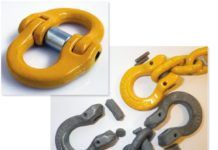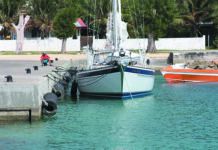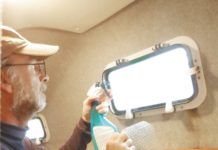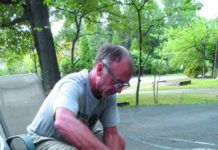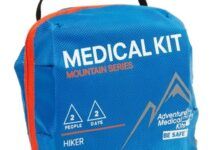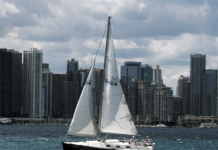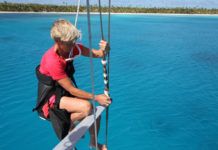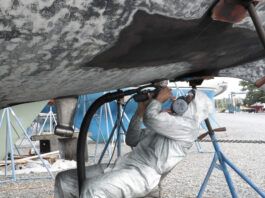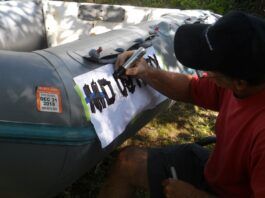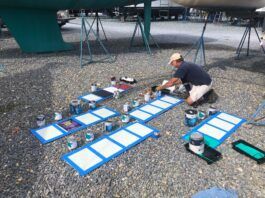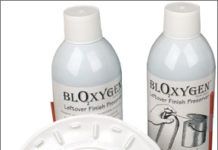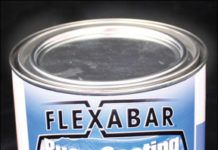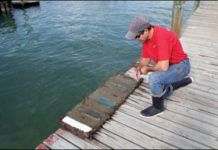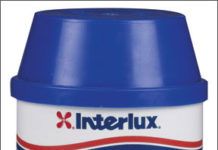A Year Later: Liquid Wax Test Results 2010
Gelcoat, particularly porous gelcoat, requires a more specialized wax than what youd use on your car. And while most of the liquid waxes we tested are liquid polymers designed specifically for gelcoat surfaces, we also tested some automotive waxes to see how theyd fare against the best marine waxes. These test products are designed to be the final layer of hull protection applied to a new boat or to a boat with oxidized gelcoat that has been thoroughly compounded and polished to a smooth, shiny finish. We tested liquid waxes from Star brite, Cajun Shine All, Collinite, 3M, Mothers, Restructure, Interlux, Imar, Nu Finish, Flitz, Yacht Brite, Woody Wax, Marine Shield, Meguiars, Flagship, Glare, West Marine, Turtle Wax, Island Girl, MP Pros, and Zaino Brothers.
The Best Sailing Gear of 2010
Practical Sailor offers the annual selection of Editors Choice products for the Gear of the Year 2010 lineup. We hope the list will guide you through the dizzying array of gear at the fall boat shows, or at least help you whittle down your wishlist for Santa. The roster covers a broad spectrum of products-from gadgets for measuring speed to a performance multihull built for speed-that have bested their peers in our tests. The lineup includes gear from Spinlock, Brion Toss, Lopolight, Selden Mast, DuBarry, Keen, Standard Horizon, and Mastervolt. It covers LED navigation lights, bosun chairs, footwear for sailors, and marine electronics. Boat maintenance products from Polymarine and Interlux also made the list.
Antifoulants for Propulsion Systems
In our search for the Holy Grail of prop paints, Practical Sailor testers delved into specialized multi-part coating systems. In the spring of this year, we had Matrix Engineering Concepts Mussel Buster Prop Coating applied to the propeller of our Union 36 test boat. Prior to that, the prop had been the test platform for Oceanmaxs Propspeed, which we featured in the November 2006 issue. In this report, we take a look at the newer product, Mussel Buster, and its application, and will weigh its pros and cons against other prop coatings, including Propspeed, Interlux Trilux Prop & Drive, and Pettits Alumacoat SR.
Practical Sailor Tests Paint Preservers
Weve touched up our varnish, slapped antifouling on the hull and, brightened that bootstripe. Now what to do with those half-full coatings cans? Its not too late to save some bucks next season by making sure the cans wont skin over or go clumpy. The trick is to chase out the oxygen. We could dump marbles into the can to fill up the remaining air space or transfer the contents to a smaller can from the local paint supplier. Instead, following a suggestion from several readers, this year, we pumped our half-empty cans of finish with Bloxygen.
Inflatable Boat Coatings Long-term Test Launched
Topside paints for inflatable boats, in general, have a poor reputation for durability. Practical Sailor checked out a selection of coatings for Hypalon and PVC fabrics to see which one would best stand up to the tests of time on the water-and under the sun. Testers coated PVC and Hypalon panels with dinghy paints from MDR-Amazon, Synergy Research Corp. (Tuff Coat), Inland Marine, Polymarine (Flexithane and Superflex), and Flexdel Corp. (Flexabar Buoy Coating).
Bottom Paint Test Updates
These six-month and 18-month bottom paint test updates cover dozens of antifouling paints that were immersed in Florida waters.Tested paints include marine coatings from Blue Water, Epaint, Flexdel, Interlux, Pettit, Sea Hawk, and Copper Coat, an epoxy-copper blend that claims multi-year protection. BoatKoat Laminates experimental stick-on antifouling for sailboats also was included in the fray. Hard antifouling paints and ablative antifouling paints work differently and are intended for different applications. Find out which type best matches your sailing style and boat maintenance regimen. Testers flagged the best bottom paints in each category, including ablative paints, hard paints, freshwater paints, aluminum paints, racing paints, water-based paints, and eco-friendly paints. Copper-free bottom paints and low-copper coatings performed surprisingly well at the six-month mark.
PS Advisor: Do Alcohol and Antifouling Mix?
Today I went to paint the bottom of my boat with Interlux’s VC-17m, which I have used since it first came on the market. I had always cut/thinned the paint a bit with acetone. Today, the West Marine store manager (who is an experienced boater) told me that Interlux changed the VC-17m formula and that you should thin it with simple rubbing alcohol. When I used the paint with the alcohol, I noticed that it did not dry as quickly as it had with acetone and seemed thicker than usual after mixing the copper powder. Is it correct that you can now use isopropyl (rubbing) alcohol to "thin" VC-17m antifouling?
Bio-Solv Green Acetone
A bottom-paint job is unpleasant from start to finish, and wiping down the hull with acetone plays a role in that unpleasantness. So when a Cinnaminson, N.J., company sent us an acetone alternative called Bio-Solv, we were more than keen to test it. Bio-Solv is a non-toxic, non-flammable cleaner that works better and is safer than acetone, lacquer thinner, or Xylene, according to Anthony Severino of MAS Epoxies, which began selling Bio-Solv last year. The company buys it from a proprietary manufacturer.
Mailport: February 2010
The February 2010 issue of Practical Sailor has letters on the following topics: requests for more used boat reviews, foggy electronics, hard varnishes, propane fridges and Iphone apps.
Liquid Wax Test Reaches Six-month Mark
Practical Sailor applied dozens of liquid boat waxes to fiberglass test panels in 2009 to determine which was easiest to apply and was the best for long-term protection of a fiberglass boat. The panels were set out to suffer in the Florida weather for six months, when testers checked in on them to see which waxes still had a gloss and which could still bead water. Topping the marine wax test field in their respective categories were products from Star brite, Cajun Shine All, Collinite, 3M, Nu Finish, Yacht Brite, and West Marine Pure Oceans,. Testers’ top picks for a shiny hull that lasts and is protected from UV damage were the 3M Scotchgard Marine Liquid Wax and Star brite’s Premium Marine Polish.











